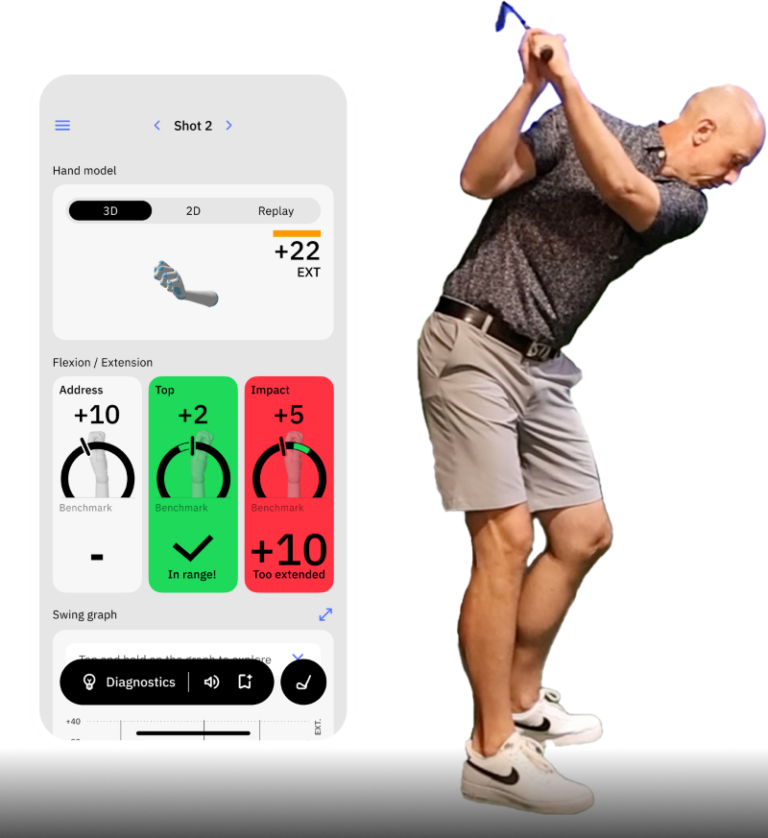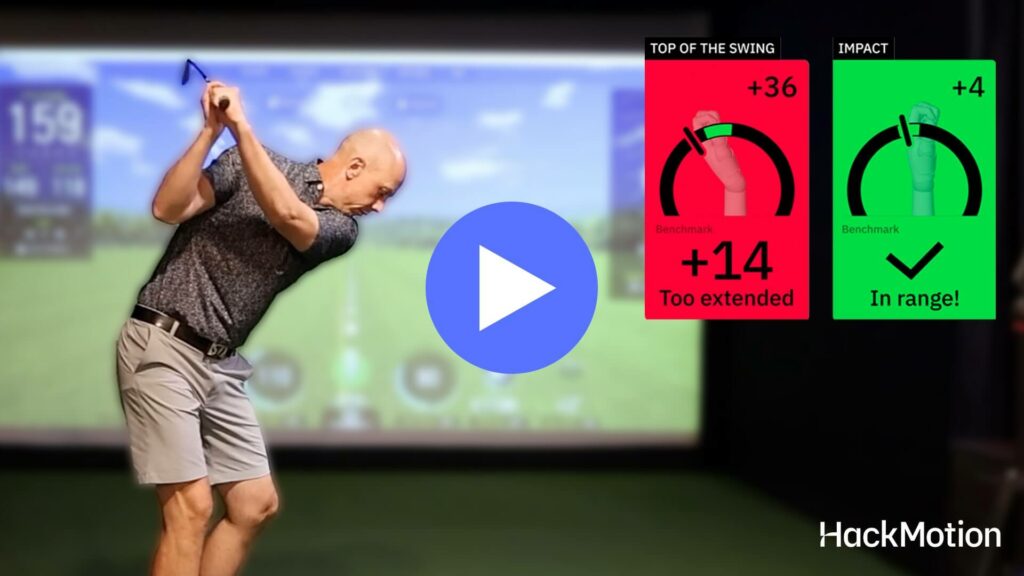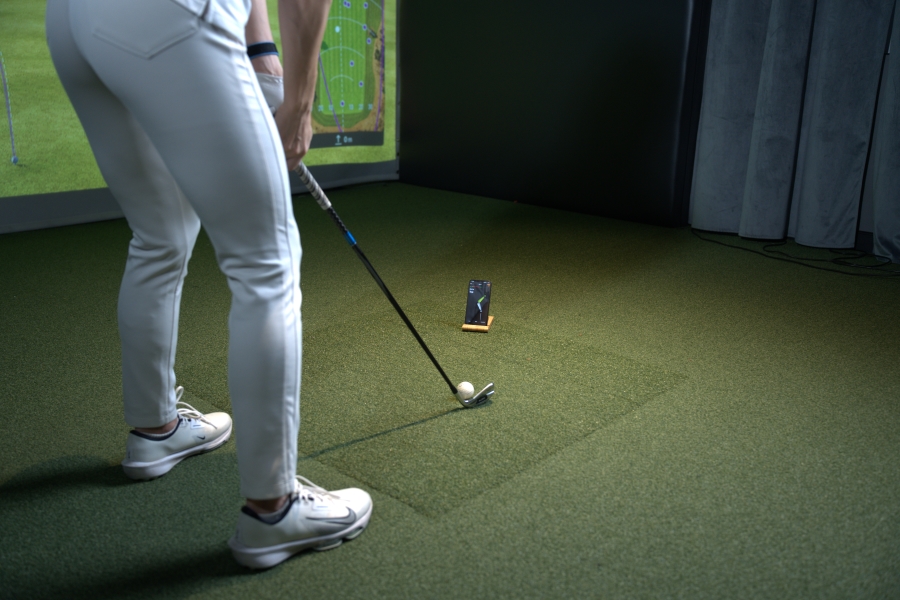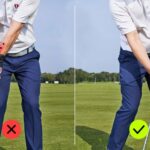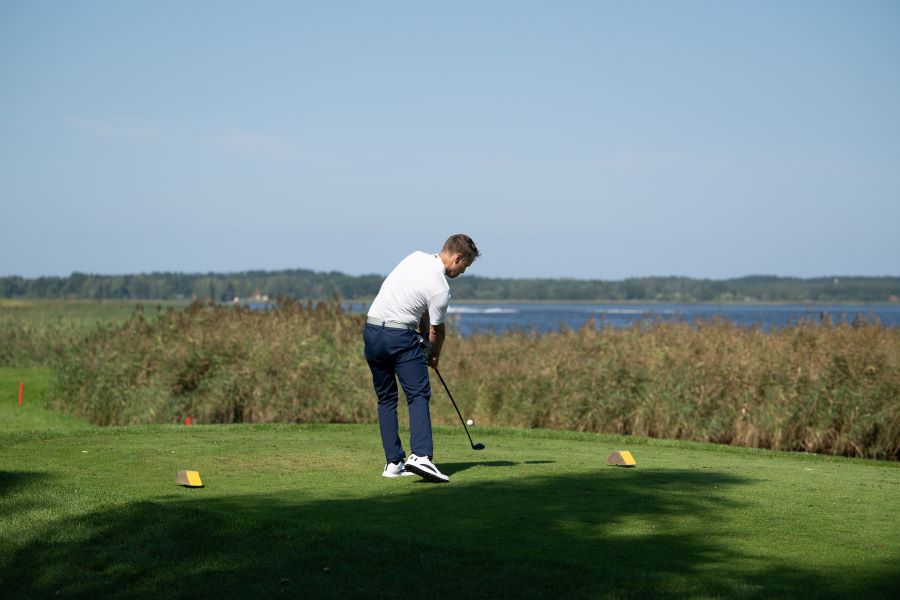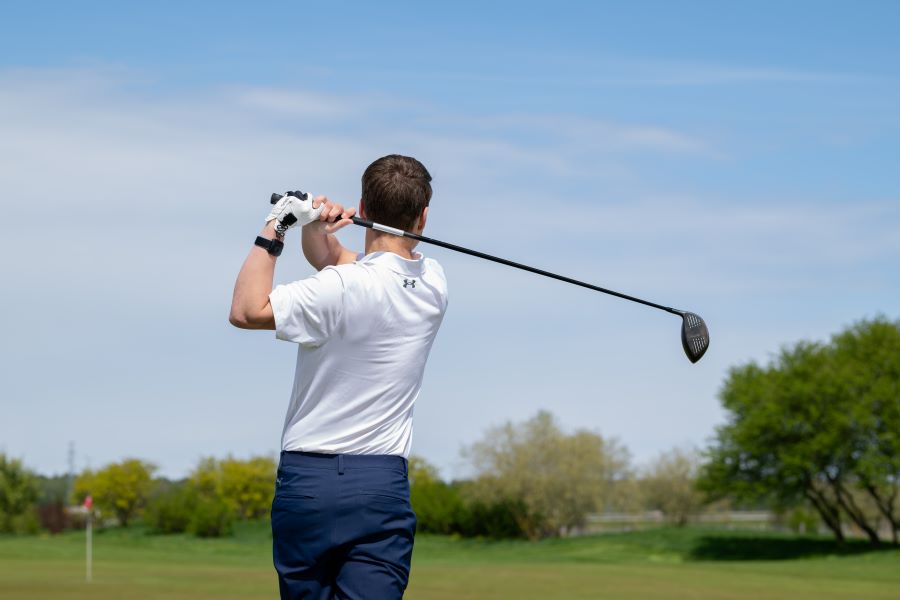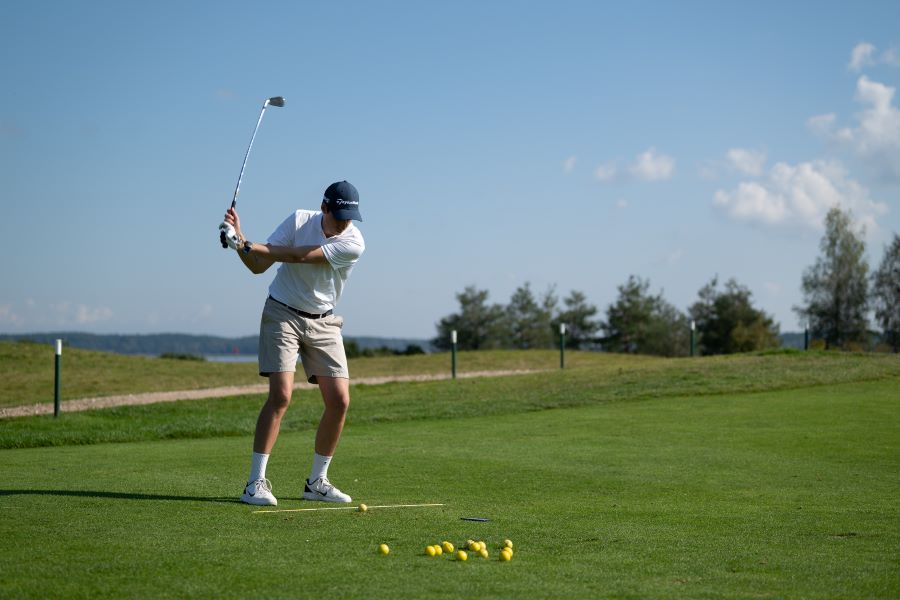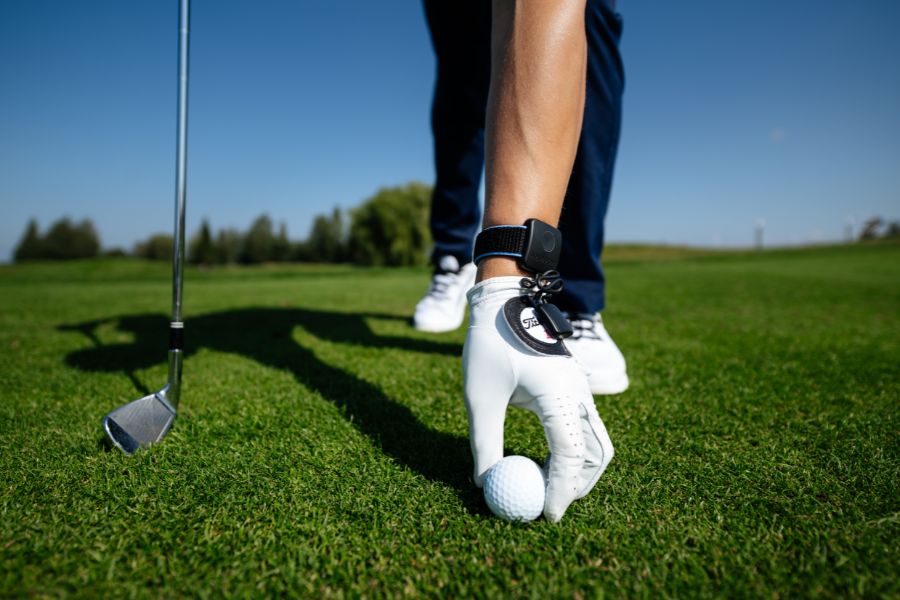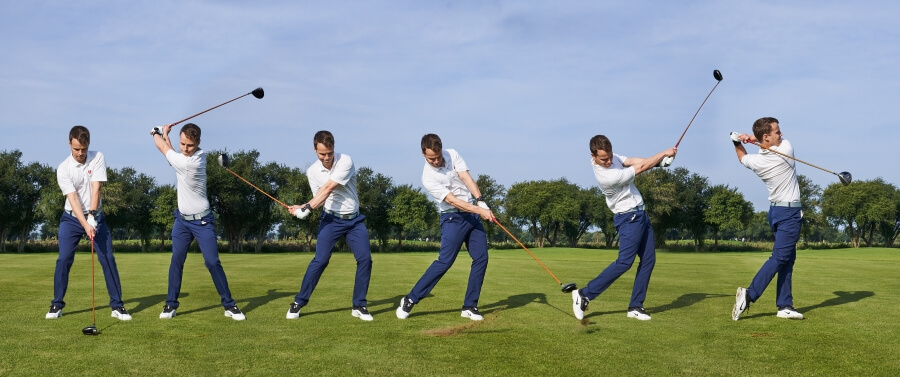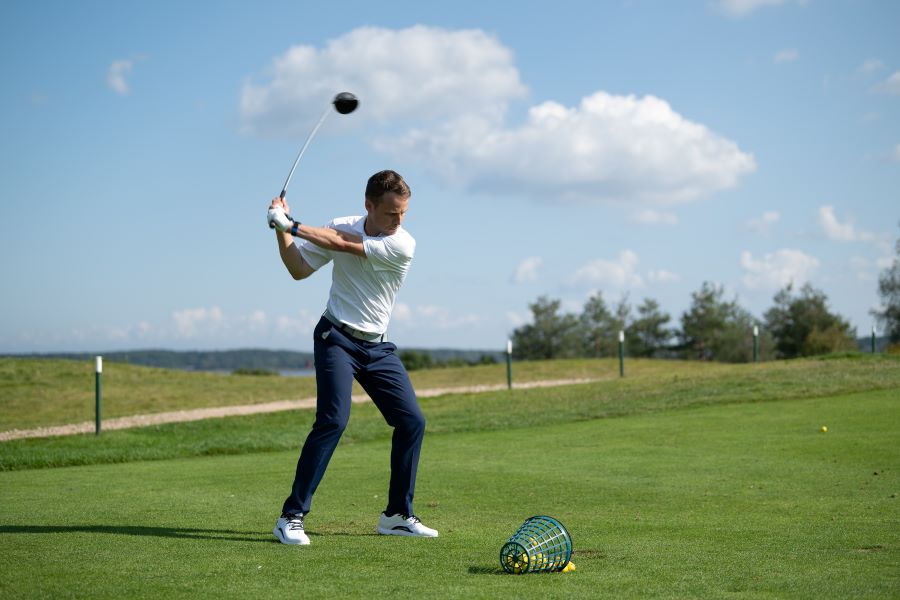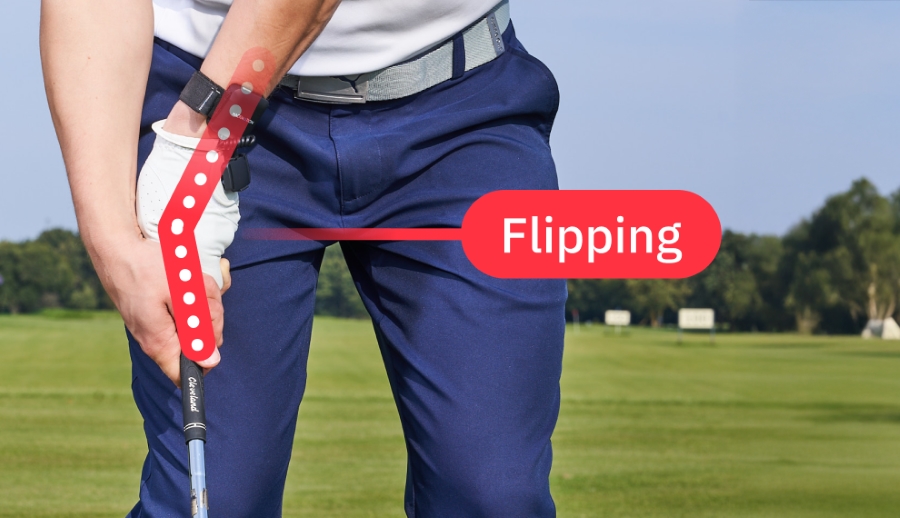Fix an Inside Takeaway: 4 Simple Ways to Stop Taking the Club Inside
The first few inches of a golf swing can make or break the rest of the motion. Taking the club inside too early can be a difficult mistake to recover from.
Very few players can start inside and still produce a great golf shot. The key is to fix the inside takeaway right from the start.
We’ll give you some tips and drills you can use right now to improve your takeaway and become a more consistent ball striker.
Key Takeaways
If you don’t have time to read the entire article on fixing an inside takeaway, here are a few key tips to remember:
- Forgetting to initiate the golf swing with a lower body turn can cause the club to go inside.
- Lack of proper shoulder and torso rotation can also lead to the club going inside.
- Wearing your HackMotion while practicing can help you determine if an inside path is caused by an issue with your wrists at setup or shortly after.
- Golfers are more likely to take the club inside with a wedge or iron than with a driver due to the setup and length of the club. Use this to improve when using shorter irons.
4 Ways to Fix an Inside Takeaway in Your Swing
Regardless of what causes you to take the club inside as you swing back, make sure that you know how to fix it.
Here are four great ways to fix the inside takeaway.
1. Calm the Hands and Wrists Down on the Takeaway
The most common problem golfers face when it comes to the takeaway is whipping the club inside with their hands and wrists.
This happens when the hands get overly active in the swing and start taking the club back before the rest of the body is ready.
During the takeaway, the wrists should remain quiet.
You don’t want to see much rotation and certainly no change in extension or flexion. In addition, make sure the wrists are not rotating inside.
You’ll see these mistakes from golfers who have inconsistent takeaways and ones that are often too quick.
Start by feeling your body rotate, and your arms and shoulders push the club back straight down the line.
Even if you do that for the first few inches back from the ball, you’ll fix the inside takeaway and get the club on plane. Practice by keeping the back of your lead hand facing the target for the start of your golf swing.
2. Engage the Shoulders and Torso
When you want to create a repeatable motion in the golf swing, use the big muscles. Hands and wrists are the smaller muscles, and they make it difficult to create repeatable motions in your golf game.
However, big muscles like the torso and the shoulders can control movement and keep the club from pulling inside too quickly.
Focus on starting your swing with your shoulder turning back. You’ll notice your lower body comes along for the ride.
When your overactive hands take over without the help of the shoulders, it’s hard to get the club on plane.
3. Make Sure Weight is Starting to Transfer to the Trail Side
In the previous fix for an inside takeaway, we mentioned the importance of ensuring your lower body turns when you initiate the golf swing.
Making sure your weight starts to transfer to the trail side is key to getting your golf club on the right path. If you’re not rotating your lower body and shifting your weight, your club can easily end up inside on the takeaway.
Additionally, if your weight transfers to your lead foot instead of your trail foot on the backswing, you’ll struggle with staying on the proper plane.
One of our favorite ways to practice this weight shift is to work on short-game shots.
Keep your arm and hand motion relatively stable and focus on feeling your weight load up on the trail side, then shift back to the lead side at impact.
4. Lighten the Grip Pressure
Finally, the last fix to try, and potentially one of the easiest, is to lighten your grip pressure on the club. Grip pressure can lead the land to become overactive.
You’ll want to keep the grip firm but not overly tight. This allows for proper rotation of the hands and wrists and the wrist hinge that you may need.
A lighter grip can help the wrists from feeling like they have to take over so early in the swing.
Some golfers find that a grip that is too strong, in addition to being too tight increases the chance of pulling the club inside right from the start.
There is a time and a place in golf for a strong grip but it could be making your inside takeaway issues worse.
Additional Drills to Fix an Inside Takeaway
If you want a few more ways to work on fixing your inside takeaway, try these drills.
Extra Golf Ball Drill
If your takeaway gets too far inside or lacks structure, this drill helps you train a straighter path and better extension. It improves your swing width and tempo by encouraging a more connected, on-plane start.
Check out the step-by-step printable below and take it with you to the range to start effectively working on a better takeaway.
Extra Ball Takeaway Drill – Step by Step:
- Set It Up: Place a second golf ball 2–3 inches behind your actual ball, directly on your target line.
- Take the Club Back: As you begin your takeaway, use the back edge of your iron to gently knock the second ball away.
- Check Your Path: If the club goes too far inside, you’ll miss the second ball — instant feedback.
- Train Extension and Tempo: This drill promotes width in the takeaway and helps you develop smooth, connected rhythm.
Towel Under Arms Drill
The towel drill helps you feel what a connected takeaway really is.
Keeping a towel pinned under both arms prevents the arms from lifting independently or disconnecting early in the swing.
This promotes better sequencing and sets you up for a more repeatable backswing.
- Video Timestamp: 3:18
Towel Under Arms Drill – Step by Step:
- Roll up a towel and place it under both upper arms at setup.
- Take slow practice swings from P1 to P2, keeping the towel tucked and pressure even.
- Focus on moving your chest and arms together to begin the takeaway.
- At P2, the shaft should be parallel to the ground, hands slightly inside, and clubface pointing slightly down.
- Once comfortable, try hitting shots while keeping the towel in place.
- If the towel falls, reassess whether you’re lifting your arms or letting your wrists extend too early.
Barrier Rod Takeaway Drill
This drill builds on the towel connection by ensuring your takeaway path stays on plane, not too flat or upright. The alignment rod acts as a physical guide to help you trace the ideal club path and wrist position.
Too steep, and you’ll crash into the rod. Too flat, and you’ll go under it. Try this drill while wearing your HackMotion to see how your wrist position needs to change to keep you on the right path.
- Video Timestamp: 5:04
Barrier Rod Takeaway Drill – Step by Step:
- Stick an alignment rod in the ground at roughly the same angle as your club shaft at address.
- Position it just inside your target line so it slightly shadows your takeaway path.
- Set up with the towel under both arms to maintain connection.
- Take the club back to P2, tracing just above the rod with your shaft.
- Ensure the clubface points slightly downward (check this using HackMotion wrist extension feedback).
- This prevents early wrist roll or extreme shaft tilt behind the body.
Conclusion
The inside takeaway puts you into a position that you won’t be able to recover from. Wear your HackMotion while you practice these drills to fix the inside takeaway.
You’ll notice that your wrists being quieter in the takeaway will help to improve their position at the top of the swing and then again at impact.
When you start striking the ball more consistently, you’ll know your swing is more on plane and that you are not taking it inside on the takeaway.
